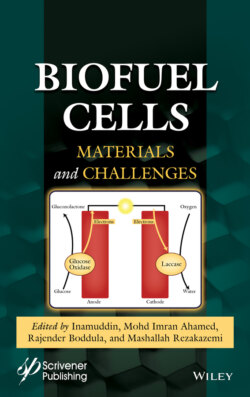Читать книгу Biofuel Cells - Группа авторов - Страница 36
2.2 Conclusions and Future Perspectives
ОглавлениеBFCs which consist of two sub-categories (EFCs and MFCs), are one of the important alternative energy generation technologies of the last fifty years. However, EFCs have attracted more attention due to their miniaturization especially in recent years. This chapter focuses on implantable EFCs, wearable EFCs and their breakthrough applications.
As can be understand from recent researches, the main purpose is to produce implantable and wearable mini/micro medical or electronic devices that can generate their own energy by using the present physiological fluids (blood, sweat, tear etc.) in the human body. The idea of producing electrical energy from living things is the first step in the development of implantable EFC. In this context, EFC experiments have been performed on many animals, such as snail, cockroaches, lobsters and rats and some of them have been reported with demonstrations that it can be produce sufficient energy. Along with the ongoing studies, biocompatibility or rejection, biofouing and inflammation are among the issues to be resolved before it can be converted into a commercial product. Besides, one of the major disadvantage of implantable systems is the need for surgical intervention. Therefore, there is a trend towards the development of wearable electronic devices that will be easily adapted to the daily life without any training by the user [50]. There are many wearable EFCs (tattoo-, textile- and contact lens-based, etc.) in this field that generate electrical energy by using physiological fluids such as human sweat and tears as fuel, recently. While these prototypes are promising for the future of wearable EFC technology, it is still in infancy. The sufficient and stable power output, long duration, conformability and mechanical resiliency are among the issues to be resolved for wearable EFCs [39]. In addition, even though some challenges faced by EFCs have been overcome with novel materials and bioelectrode design, there are still roadblocks to need improve stability, sufficiently power density and control of EFC bioelectrode before the commercialization.
The promising implantable and wearable EFC techology requires interdisciplinary research efforts to overcome the challenges. It is expected that wearable and implantable devices powered by biofuel cells would be widely used to benefit people in the near future.
